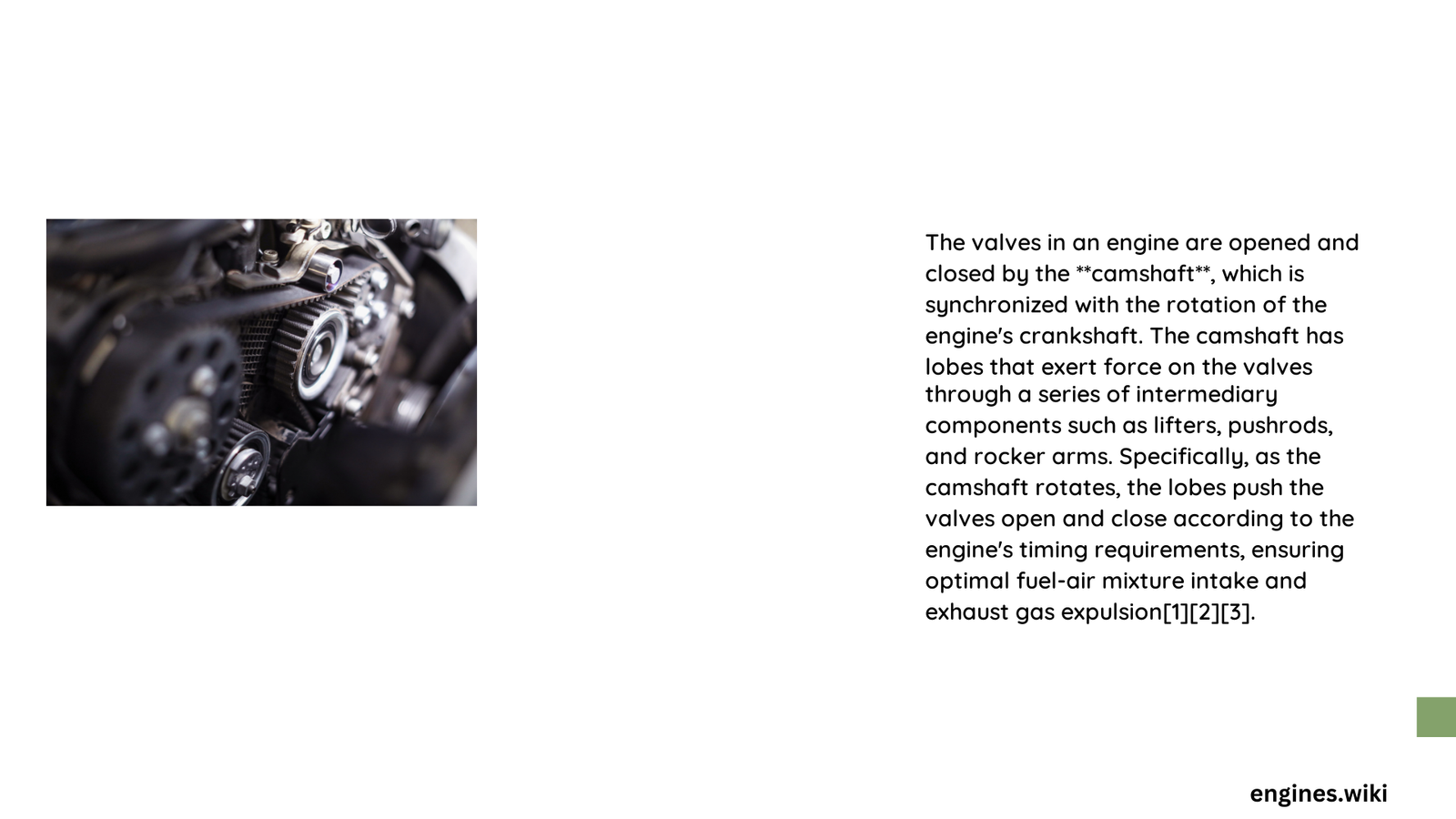What Opens the Valves in an Engine: Precise Mechanical Symphony
Modern automotive engines rely on a complex choreography of mechanical components to open and close valves with remarkable precision. The camshaft emerges as the primary conductor of this intricate performance, utilizing strategically designed lobes that transform rotational motion into precise valve actuation, ensuring optimal engine breathing and performance.
How Do Camshafts Trigger Valve Movement?
Camshafts represent the fundamental mechanism responsible for opening engine valves. These rotating shafts feature uniquely shaped lobes that push against lifters, transferring mechanical energy to open intake and exhaust valves during specific engine cycles.
Key Mechanical Components
| Component | Function | Interaction |
|---|---|---|
| Camshaft | Primary motion generator | Rotates and pushes lobes against lifters |
| Lifters | Motion transfer mechanism | Translate cam lobe movement to valve action |
| Valve Springs | Restoration mechanism | Return valves to closed position |
What Determines Valve Opening Precision?
Several critical factors influence valve opening mechanics:
- Rotational Synchronization
- Camshaft rotates at half crankshaft speed
- Ensures precise valve timing
-
Maintained through timing belt/chain
-
Lobe Profile Design
- Determines valve lift characteristics
- Controls duration and intensity of valve opening
- Engineered for specific performance requirements
Why Do Hydraulic Lifters Matter?
Hydraulic lifters play a crucial role in maintaining consistent valve operation:
- Automatically adjust valve clearance
- Eliminate manual valve lash adjustments
- Provide zero-clearance operation
- Reduce mechanical wear
- Enhance overall engine performance
What Challenges Affect Valve Operation?
Potential complications in valve mechanism include:
- Excessive component wear
- Timing belt/chain degradation
- Improper valve clearance
- Material fatigue
- Lubrication inconsistencies
Technical Specifications of Valve Mechanism
Typical Valve Train Parameters:
– Camshaft rotation: 1/2 crankshaft speed
– Valve opening duration: 250-300 degrees
– Lift range: 8-12 millimeters
– Operational temperature: -40°C to 150°C
Advanced Valve Actuation Technologies
Modern engines explore innovative valve control methods:
- Variable valve timing (VVT)
- Electromagnetic valve actuators
- Pneumatic valve control systems
- Electronic valve management
Maintenance Recommendations
To ensure optimal valve performance:
- Regular oil changes
- Timing belt replacement per manufacturer specifications
- Periodic valve clearance inspections
- Use high-quality lubricants
- Monitor engine performance indicators
Conclusion
Understanding what opens valves in an engine reveals a sophisticated mechanical system where precision engineering meets dynamic performance. Each component works harmoniously to transform rotational energy into precise valve movement.

